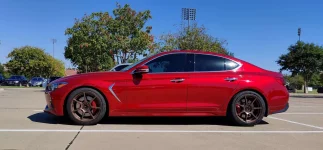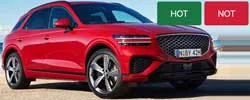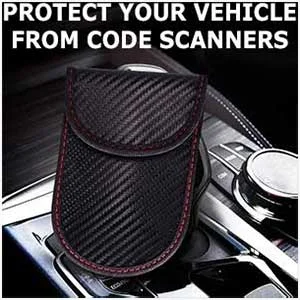Have you noticed a decent reduction in body roll with the new bars? I measured my OEM bars as 22mm Front and 16mm Rear. It looks like the Whiteline bars are 2mm larger diameter. That doesn't sound like much but I believe the torsional stiffness (all other things remaining the same) varies with the Diameter^4. If that's the case, they should be about 42% stiffer in the front and 60% stiffer in the rear. Sounds decent.
I guess it's hard to tell for sure what the bars did if the springs are also stiffer. Did you notice if the Eibach spring wire diameter is larger than stock, or are they just shorter?
Reduction in body roll is such a given, I didn't think it was worth mentioning.

You're correct that, since I installed both lowering springs and anti-roll bars at the same time, it would be more difficult to tell to what degree each influences handling. Normally, I prefer to do one mod at a time, then evaluate, before commencing on the next mod I deem necessary. That said, I've done enough of these, to the point where I'm confident with doing both
mods at the same time, and still being able to discern the nuances of each.
First off, I knew I wasn't changing shocks, because no
aftermarket upgrades were available unless I go to coilovers. This means it's best to keep the lowering amount moderate. I found the Eibach Pro-Kit springs were a good match for what I want. Technically speaking, my first suspension mod was actually reducing Mus (unsprung weight, mostly the
wheel+tire) by going to the 18x8.5 Enkei TFR wheels. Hyundai/Kia engineers matched Ks (coil spring constant) and Cs (damping profile) to both the Mus and Kt (tire spring constant). They went with a Cs that is relatively soft, because kt is relatively stiff (low profile 19" tires).
My reducing both Mus and kt actually made Cs relatively higher/stiffer in my new schema. Less unspring mass requires less damping force to control its movement. This is good, such that I was not as miffed about not being able to upgrade the dampers. The only part left was to stiffen ks to complete the suspension mod. This is where the lowering/stiffer springs and anti-roll bars come it.
Most folks understand the basics of what each of these do, as their namesakes hint at their functions. However, what they actually influence is far more nuanced and a bit more difficult to grasp:
1. Lowering/stiffer spring and anti-roll bars both add ks to the suspension system. Anti-roll bars only adds stiffness to the rolling axis though independently at each axle. Springs adds stiffness to both rolling and pitching axes, as well as independently at each
wheel. It is not difficult to understand why lowering/stiffer springs are a better method of suspension component upgrade.
2. As with any type of spring, both anti-roll bar and coil spring have other properties - more than just stiffness, kt. There is also their linearity. A coil spring is highly linear spring, which is why they are such excellent choice for precision suspension control in most passenger vehicle applications. The anti-roll bars OTOH is a hybrid spring, comprising of both a torsional spring and a cantilever (bending) spring. Most of them have a fixed torsional spring constant, but many
aftermarket ones have adjustable cantilever spring rate. By selecting different hole in which to mount the tie rod, one can tune the cantilever spring constant and, at the same time, varying the moment arm for actuating the torsion spring. For finer suspension movement, practically only the cantilever spring of the anti-roll bar is active. Only for grosser transient movement, and large steady-state deflections does the torsional spring becomes the primary actor.
3. In addition to kt and linearity, there is also a spring's natural frequency,
ωn. Without going into too much details, I'll just say that the anti-roll bar is more suited to controlling the sprung mass movement, Ys (basically the the whole car body), and not as much for controlling the unsprung mass movement, Yus.
So what does all this mean, you might ask? Well, it means that any reduction in brake dive and accel squat should be credited to the lowering/stiffer spring. Reduction is body roll is both anti-roll bar and lowering/stiffer spring. Faster transient body movement, like in initial corner tip-in is likely more coil springs, while sustained steady state, like through a large sweeping turn is likely helped more by the anti-roll bars. These are, of course, more generalizations, but my driving impressions so far with both
Stinger/G70 have not convinced me otherwise.
What I have not yet being able to appreciate, are the two
mods' influence on cornering attitude (understeer/oversteer) at the limits, with varying amounts of throttle input. Too dangerous to try at on public roads. We'll get a chance at it later this month at the Track Day.












